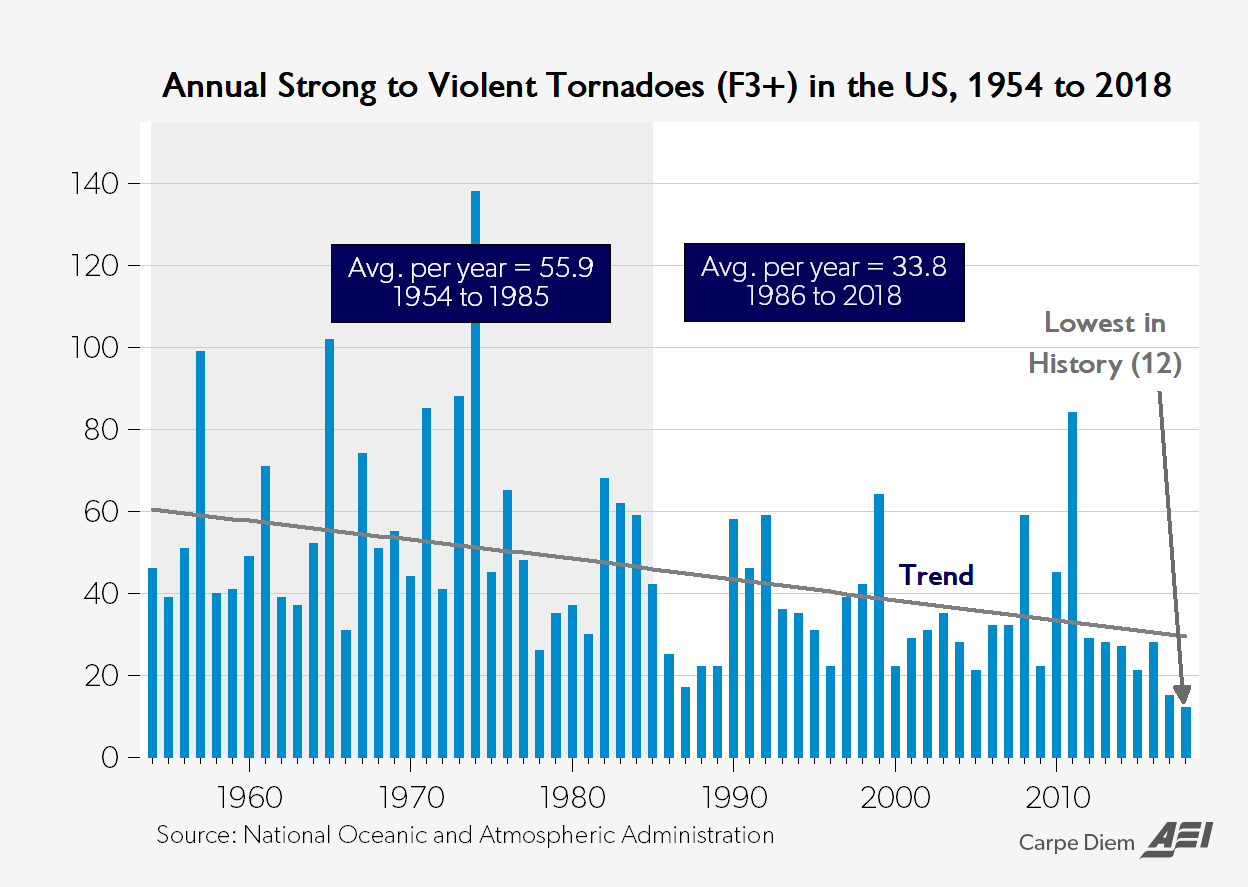It is human nature to assume that the latest severe weather event is part of a pattern of change. But when it comes
to tornadoes in the United States, the statistics suggest otherwise.
Tornado statistics in the U.S. have been kept since the 1950s. As the population has grown and video cameras and smartphones
have become commonplace, there has been some increase
in the total number of tornadoes reported, but it is well known that tornado reports are clustered near where people live. As
towns, cities, and roads have expanded, there are more visual sightings of relatively weak tornadoes (EF0, EF1, and EF2 intensities)
which would have gone undetected before.
But, as can be seen in the following plot, the incidence of stronger tornadoes (EF3 to EF5) have gone down markedly in the U.S. since the 1950s.

If anything, global warming should cause fewer tornadoes to form.
The reason is that the wind shear required for tornado formation
requires the proximity of COLD air masses next to warm air masses. In fact, most tornado outbreaks in the U.S. are associated with unusually cool weather.
In the tropics, where temperatures are warm year round, tornadoes are quite rare.
|


